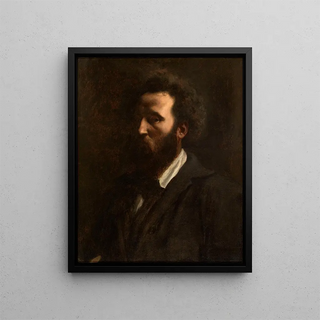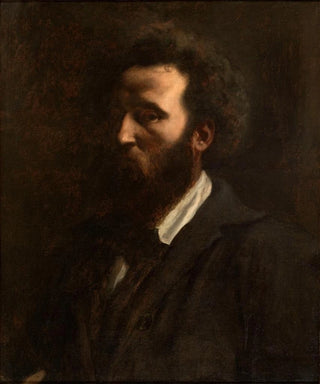Art print | Self-portrait - Pierre Puvis de Chavannes


View from behind

Frame (optional)
Pierre Puvis de Chavannes' self-portrait is a work that transcends mere representation. This painting, both intimate and universal, reveals not only the image of the artist but also a profound reflection on identity and artistic creation. By painting himself, Puvis de Chavannes embarks on an exploration of his soul, while situating his work within the grand narrative of art history. This subtle piece invites viewers to delve into the artist's inner universe, offering a glimpse of the era in which he lived. The art print of this self-portrait allows appreciation of the richness of its message and the finesse of its execution.
Style and uniqueness of the work
The self-portrait stands out for its unique style, characteristic of Puvis de Chavannes' approach. The painter, influenced by Neoclassicism, manages to marry tradition and modernity in a striking visual harmony. The delicate colors and simplified forms demonstrate his technical mastery, while the expression on his face, both serene and introspective, evokes deep reflection on his condition as an artist. The background, of great simplicity, highlights the central figure, creating a dialogue between the individual and their environment. This stylistic choice reinforces the idea that art is not limited to representation but is also a means of communicating emotions and inner thoughts.
The artist and his influence
Pierre Puvis de Chavannes is an emblematic figure of the 19th century, whose work has left a mark on the French artistic landscape. As a pioneer of Symbolism, he distanced himself from academic conventions to explore more personal and spiritual themes. His innovative approach inspired many artists, both contemporaries and followers, who saw in him a model of daring creativity. Puvis de Chavannes also played an important role in promoting mural art, contributing to integrating painting into the architecture of public spaces. His self-portrait, as a reflection of his artistic journey, embodies this quest for meaning and authenticity that characterizes his

Matte finish

View from behind

Frame (optional)
Pierre Puvis de Chavannes' self-portrait is a work that transcends mere representation. This painting, both intimate and universal, reveals not only the image of the artist but also a profound reflection on identity and artistic creation. By painting himself, Puvis de Chavannes embarks on an exploration of his soul, while situating his work within the grand narrative of art history. This subtle piece invites viewers to delve into the artist's inner universe, offering a glimpse of the era in which he lived. The art print of this self-portrait allows appreciation of the richness of its message and the finesse of its execution.
Style and uniqueness of the work
The self-portrait stands out for its unique style, characteristic of Puvis de Chavannes' approach. The painter, influenced by Neoclassicism, manages to marry tradition and modernity in a striking visual harmony. The delicate colors and simplified forms demonstrate his technical mastery, while the expression on his face, both serene and introspective, evokes deep reflection on his condition as an artist. The background, of great simplicity, highlights the central figure, creating a dialogue between the individual and their environment. This stylistic choice reinforces the idea that art is not limited to representation but is also a means of communicating emotions and inner thoughts.
The artist and his influence
Pierre Puvis de Chavannes is an emblematic figure of the 19th century, whose work has left a mark on the French artistic landscape. As a pioneer of Symbolism, he distanced himself from academic conventions to explore more personal and spiritual themes. His innovative approach inspired many artists, both contemporaries and followers, who saw in him a model of daring creativity. Puvis de Chavannes also played an important role in promoting mural art, contributing to integrating painting into the architecture of public spaces. His self-portrait, as a reflection of his artistic journey, embodies this quest for meaning and authenticity that characterizes his






